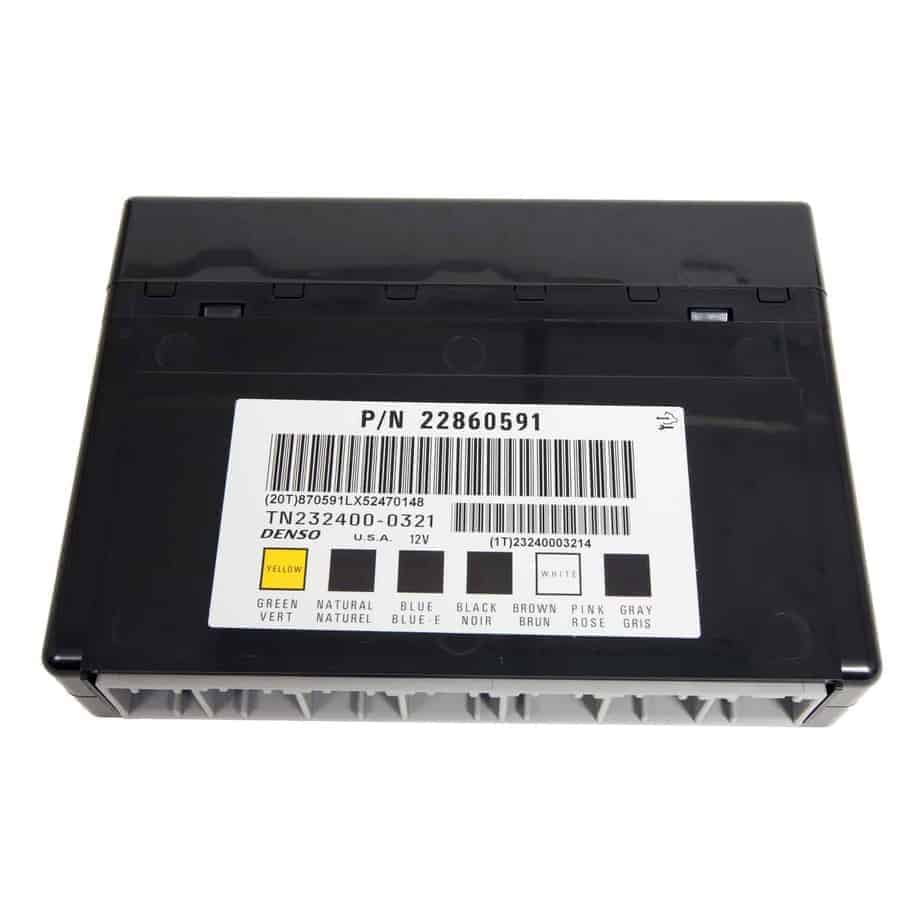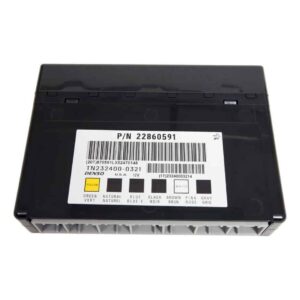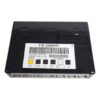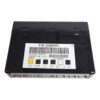Restore Your Vehicle’s Electrical Functions with a VIN-Programmed BCM
Are you chasing down bizarre electrical problems in your Cadillac, Chevy, or GMC? Flickering lights, malfunctioning power windows, a security system that has a mind of its own, or a frustrating no-start condition can often be traced back to one component: a failing Body Control Module (BCM). As the central command center for your vehicle’s body electronics, a faulty BCM can create a cascade of confusing and intermittent issues. This isn’t just an inconvenience; it can affect vehicle safety and security.
This is a direct-fit replacement Body Control Module, arriving at your door fully programmed with the latest GM software updates for your specific vehicle. We take the guesswork and the expensive trip to the dealership out of the equation. Simply provide us with your vehicle’s VIN during checkout, and our experts will handle the programming. You’ll receive a part that’s ready for installation, designed to restore the precise functionality you’ve been missing.
A Technician’s Notebook: The DTS with a Mind of its Own
I remember a 2008 Cadillac DTS that came into the shop with a laundry list of complaints from the owner. The radio would switch off, the interior dome lights would stay on, and sometimes the key fob wouldn’t work. He’d been to two other shops that couldn’t find the issue because it was so intermittent. After checking the main power and ground circuits, my scanner kept showing communication loss codes with the BCM (U0140). Instead of a wiring issue, it was the BCM itself failing internally. We installed a VIN-programmed module just like this one, and it solved every single one of his electrical gremlins in one go. These modules are the key to fixing those ghost-like problems.
Is Your GM Vehicle Showing These BCM Failure Signs?
A failing BCM can manifest in numerous ways. If you’re experiencing any of the following, a faulty module is a likely culprit. Look out for these common symptoms:
- ✔ Erratic or non-functional power windows, locks, and mirrors.
- ✔ Interior or exterior lights that flicker, stay on, or don’t work at all.
- ✔ The security system or anti-theft light is activated, preventing the car from starting.
- ✔ Inaccurate or dead gauges on the instrument cluster.
- ✔ Key fobs or remote entry systems failing to operate correctly.
- ✔ Diagnostic Trouble Codes (DTCs) related to communication loss, such as U0140, U0155, or B-series codes pointing to body systems.
- ✔ Unresponsive climate control functions.
Your Straightforward BCM Installation Guide
Installing your new BCM is a manageable job for a confident DIYer. While the exact location varies by model (check your service manual), the general process is consistent. This guide for a 2010 STS Body Control Module is a great example.
- Safety First: Always disconnect the negative terminal from your vehicle’s battery and wait a few minutes to ensure all systems are powered down.
- Locate the BCM: On the 2010 Cadillac STS, the BCM is typically located in the center dash area. You may need to remove a lower dash panel or glove box for access.
- Disconnect and Remove: Carefully unplug the electrical connectors from the old BCM. They have locking tabs that need to be depressed. Once disconnected, unbolt or unclip the module from its mounting bracket.
- Install the New Module: Mount your new, pre-programmed BCM in the same location. Securely plug in all the electrical connectors, ensuring they click into place.
- Reconnect Power: Reattach the negative battery terminal.
- Perform Relearn Procedures: Start the vehicle. Some models may require a Brake Pedal Position Relearn or an Airbag System Sync if a warning light appears. Refer to the post-installation notes below. Test all functions like windows, locks, and lights to confirm the repair.
Verified Fitment Across a Wide Range of GM Models
This Body Control Module is a direct replacement for a vast array of GM cars, trucks, and vans. It replaces numerous part numbers, including 15828601, 25892622, and 20815898. Please verify your vehicle from the list below. If your vehicle is listed, this module is a guaranteed fit once programmed to your VIN.
IMPALA 06-12 Body Control (BCM); (LH dash)
ACADIA 07-12 Body Control (BCM); (LH dash)
TAHOE 10 Body Control (BCM); (under steering column), ID 25892622
ESCALADE 10 Body Control (BCM); (under steering column), ID 20815898
EXPRESS 2500 VAN 11-12 Body Control (BCM)
SAVANA 1500 VAN 08-12 Body Control (BCM); (center dash)
… and many more models.
Important Post-Installation Information
While our VIN programming handles the heavy lifting, some vehicle systems may need to be re-synced after installation. This is a normal part of the process.
- Airbag System Sync: If the airbag light is on after installation, a simple “Setup SDM Primary Key in BCM” procedure must be done with a compatible pro-level scan tool. This syncs the new BCM with the airbag system.
- Brake Pedal Position Relearn: On certain models, a brake pedal position sensor relearn might be needed to ensure your brake lights and traction control system function correctly.
Disclaimer: Always refer to a factory service manual for your specific vehicle for detailed instructions and torque specs.
Frequently Asked Questions
Why do you need my VIN?
Your VIN (Vehicle Identification Number) allows us to program the Body Control Module with the exact software and settings for your vehicle’s specific options and features. This ensures compatibility and proper function right out of the box, eliminating the need for expensive dealership programming.
Is this a simple plug-and-play installation?
It’s very close. Because we pre-program the module, you can avoid the most complex step. You simply install the part, and in most cases, you’re done. However, as noted, some vehicles may require a simple relearn procedure for the brake or airbag system, which can be done with a bi-directional scan tool.
Do I need to send my old BCM back?
No. There is no core charge for this part. You can keep your original module, which saves you the time and hassle of packaging and shipping it back to us.
What tools do I need for the installation?
Basic hand tools are typically all that’s required for the physical installation, such as a socket set and trim removal tools to access the module’s location. A professional diagnostic tool may be needed for any post-installation relearn procedures if warning lights appear.
Will this fix my car not starting?
If the no-start condition is caused by the BCM’s control over the anti-theft or security system, then yes, this module is designed to resolve that problem. A faulty BCM is a very common reason for security-related starting issues in GM vehicles.



